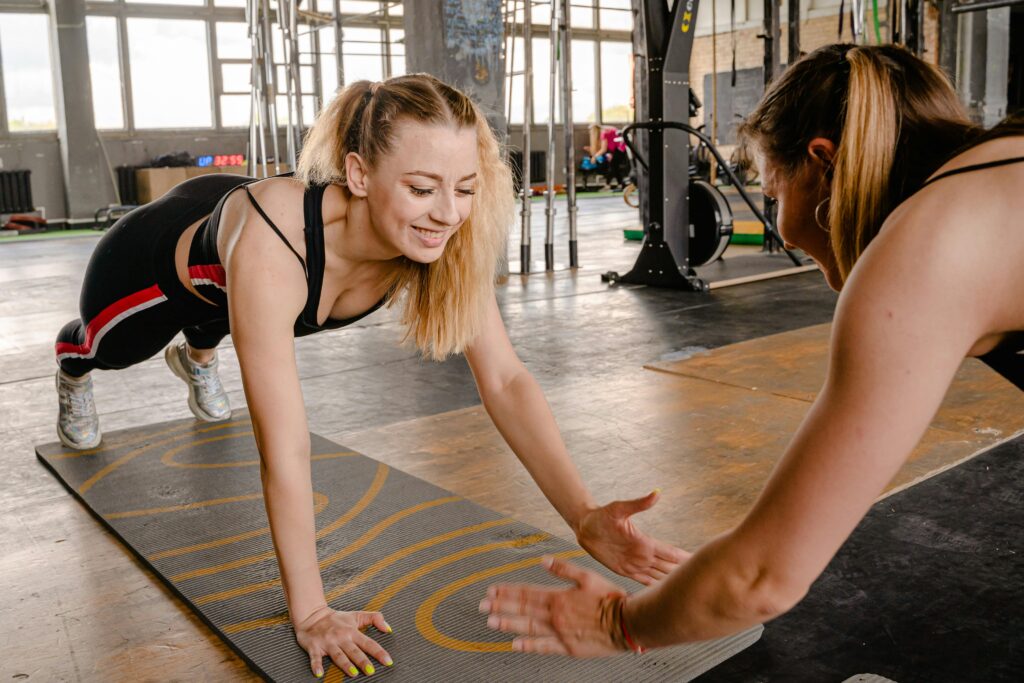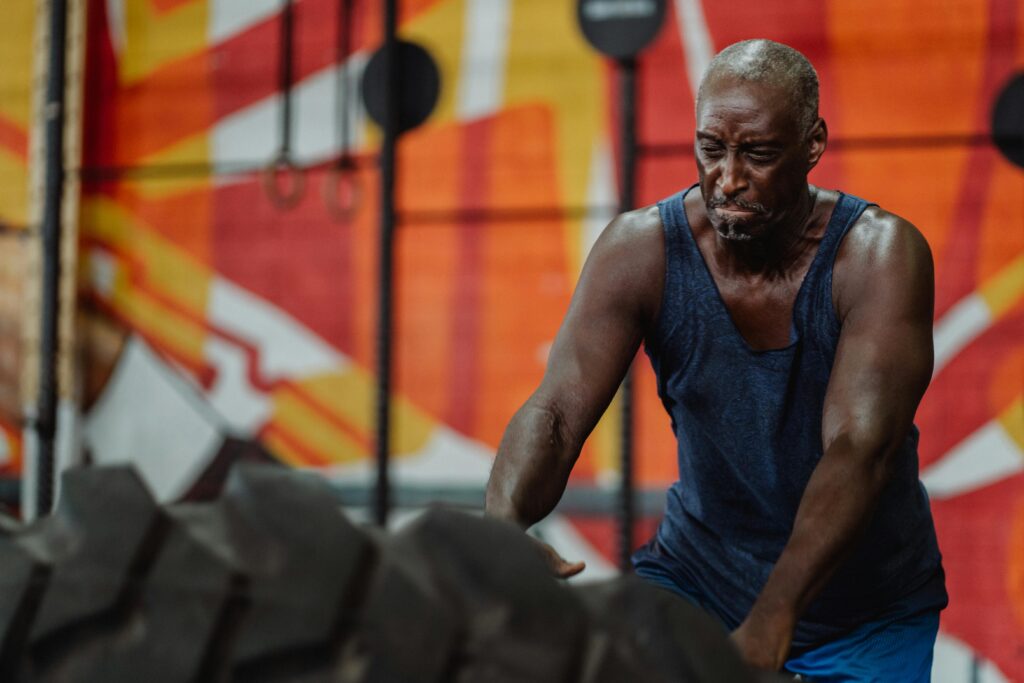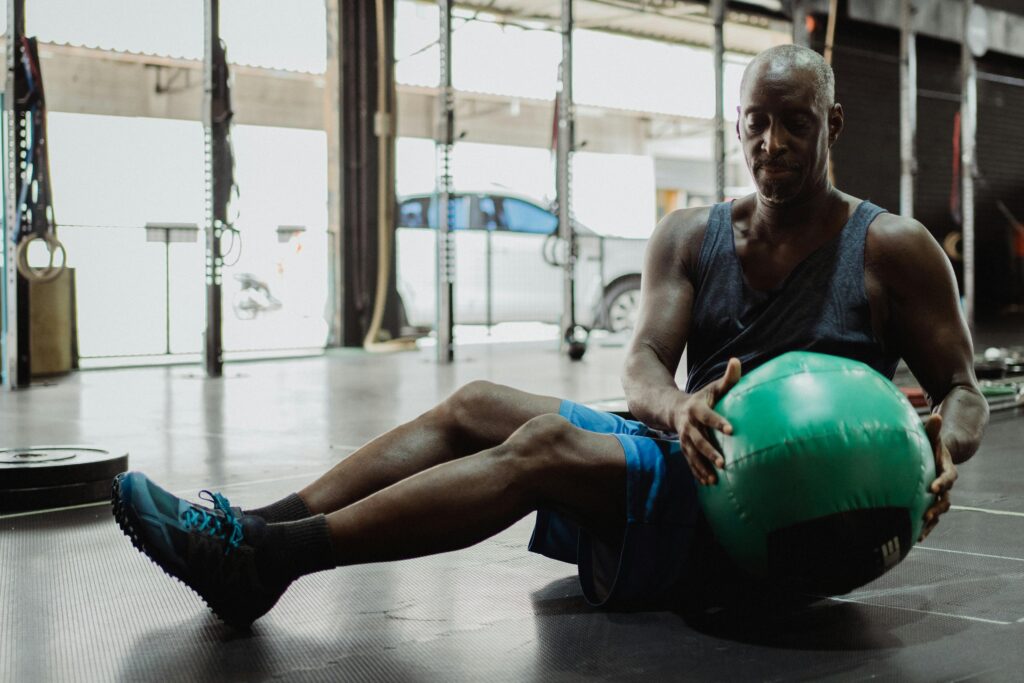Like many, I didn’t have a background in fitness. I used to believe what I saw online or heard in the locker room. When I first joined a gym, I thought pain meant progress, cardio was the only way to lose fat, and lifting weights would make me bulky. Does this sound familiar to you?
Here’s the truth: falling for fitness myths wastes time, stalls progress, and can even lead to injury. In this post, I’m breaking down the most common myths I’ve heard—and probably believed at some point—so you can skip the confusion and focus on what actually works.
In This Article
- Myth: Lifting Weights Makes You Bulk Up Instantly
- Myth: Cardio Is the Only Way to Lose Weight
- Myth: Spot Reduction Works
- Myth: More Sweat Equals a Better Workout
- Myth: No Pain, No Gain
- Myth: Carbs Are Bad for Fitness Goals
- Myth: High Reps Will Tone Muscles Without Adding Bulk
- Myth: You Need Supplements for Results
- Myth: Age Is a Barrier to Fitness
- FAQs About Fitness
- Conclusion
1. Myth: Lifting Weights Makes You Bulk Up Instantly

Many people think that lifting weights will make them “bulk up” which stops them from including strength training in their workouts. It’s important to know that building muscle takes time. You need to work out consistently and eat a diet rich in protein and calories. Most people, especially women, don’t have the hormonal profile to bulk up quickly or efficiently without serious dedication. So, rest assured, you won’t wake up one day looking like a bodybuilder.
Tip: To achieve a toned and sculpted physique, focus on lifting moderate weights while performing higher repetitions. This method helps you build lean muscle and improve your metabolism. In turn, this leads to better body composition. Your diet is key to building muscle. To reach your fitness goals, pair your strength training with a balanced and nutritious diet. This combination will help your body grow stronger and more defined over time.
2. Myth: Cardio Is the Only Way to Lose Weight

Cardio can help with weight loss, but it’s just one part of the process. Strength training is also important because it constructs muscle. More muscle can make your resting metabolism work faster. Also, diet is crucial, as maintaining a calorie deficit is essential for sustainable weight loss. Relying only on cardio can result in muscle loss, which may leave you weaker and less toned than desired.
Tip: Make a workout plan that includes three parts: fun activities that get your heart pumping (like running or biking), exercises to make your muscles strong (like lifting weights), and stretches to help you stay flexible. This plan will help keep your heart healthy and your body strong!
3. Myth: Spot Reduction Works (e.g., Crunches for Abs)
Unfortunately, reducing fat in one specific area is impossible through targeted exercises alone. Spot reduction is a persistent myth, and while exercises like crunches strengthen muscles in targeted areas, they don’t specifically burn fat from those regions. Instead, total body workouts and maintaining a calorie deficit are more effective approaches.
Tip: Incorporate full-body workouts along with targeted exercises to tone specific areas. This combination will strengthen muscles and promote overall fat loss.
4. Myth: More Sweat Equals a Better Workout

Sweating cools your body down, but it doesn’t show how hard you’re working out. Room temperature, humidity, and your body’s own makeup can all affect how much you sweat. So, don’t use sweat as a sign of your success. Some workouts, like strength training or stretching, might not make you sweat much, but they are still very helpful.
Tip: When you track your workout progress, focus on key numbers like the number of repetitions, the weight you lift, and your endurance levels. Instead of paying attention to how much you sweat, use these measurable factors to understand your fitness improvements and set better goals. Tracking these metrics will provide a more accurate performance assessment and help you stay motivated throughout your fitness journey.
5. Myth: No Pain, No Gain

Pushing yourself is important for personal growth. However, it’s crucial to know the difference between handling discomfort and experiencing real pain. It’s normal to feel sore after a workout, especially if you’re trying something new or working harder than usual. If you feel sharp pain in one spot, it could mean you’re injured. It’s essential to listen to your body and recognize when it’s time to take a break, allowing you to continue making progress in the long run.
During all these years of training, and especially during my Sambo classes, I’ve been injured at least 10 times in several parts of my body (forearms and thighs especially). I can tell you that it’s the most painful thing, because I’ve had to stop training afterwards for sometimes more than two months, the time it takes for me to heal.
Tip: Recognizing the distinction between muscle soreness and injury pain is essential. Muscle soreness, often felt after a workout, is a common indication that your muscles are adapting and strengthening. In contrast, Injury pain happens when you hurt yourself. It’s important to take rest days to help your body heal. Resting makes your muscles stronger and can help you avoid getting hurt again.
6. Myth: Carbs Are Bad for Fitness Goals
Carbohydrates provide the main energy for your body, especially during workouts. If you cut out carbs completely, you might feel tired and perform poorly. The type of carbs you choose is important. Simple sugars and refined carbs can cause energy crashes. In contrast, complex carbs like vegetables ans whole grains give you steady energy for your workouts.
Tip: Rather than cutting carbs, focus on choosing complex carbohydrates. They release energy slowly and help you maintain stamina during workouts.
7. Myth: High Reps Will Tone Muscles Without Adding Bulk

Reality: Many believe using light weights with high reps will “tone” muscles without building size. Muscle tone is about building lean muscle mass and reducing body fat percentage. Depending on the goal, low-rep heavy lifting and high-rep lighter lifting can be effective. “Toning” means achieving a low enough body fat percentage to see the muscle definition you’ve built.
Tip: Incorporate high-rep and low-rep strength exercises into your routine for a balanced muscle-building and definition approach.
8. Myth: You Need Supplements for Results
Reality: Supplements can help fill dietary gaps but aren’t necessary for achieving fitness goals. A balanced diet with various nutrients should cover most needs, and supplements should only be used under guidance. Essential nutrients for fitness, like protein, vitamins, and minerals, can often be obtained through whole foods.
Tip: To achieve optimal health, prioritize a nutrient-rich diet and consult a healthcare provider before incorporating supplements into your daily routine.
9. Myth: Age Is a Barrier to Fitness

Age should not keep anyone from exercising. We just need to change how we do it. Exercise is good for everyone. It builds strength, improves flexibility, and boosts mental health. It’s important to adjust workouts based on your body’s needs and limits, especially for high-impact or heavy-lifting exercises.
Tip: As you age, prioritize functional fitness exercises; those that enhance daily activities, including balance, flexibility, and strength training. These will support everyday movements and overall health.
FAQs About Fitness
Consistency matters more than perfection. Showing up regularly and sticking with your plan beats short bursts of intensity.
Fitness includes cardiovascular endurance, muscular strength, muscular endurance, flexibility, and body composition. Together, they represent a balanced, functional body.
Staying motivated and consistent is the biggest challenge. Life gets in the way, and progress can feel slow. But persistence pays off.
The five fitness factors are:
Cardiovascular endurance
Muscular strength
Muscular endurance
Flexibility
Body composition
Conclusion
Getting fit is about making good habits and paying attention to your body. I’ve learned a lot by figuring out what is true and what is not. If you’re just starting, remember that trying your best is what matters, not being perfect. Follow your own path, stay on track, and keep going!
Trust the process, and celebrate every step you take!
Connect with us on Facebook and Instagram for a daily dose of inspiration and exciting updates! Join our vibrant community and be part of the conversation!

